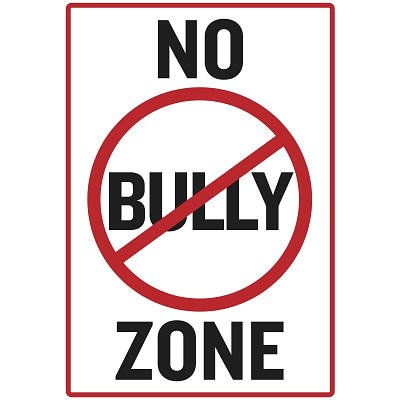
Now, don’t misunderstand me: Bullying is a real issue that needs to be addressed by parents, teachers, and students alike. However, sometimes I get the feeling that the word “bullying†is being used as an umbrella word to describe any kind of hurt that one kid experiences from another kid. Allow me to provide an example:
Student (emerging from gym changeroom): Ms. A., Johnny is bullying me!
Me: What happened?
Student: He was throwing his deodorant and it hit me!
Me: Did he mean to hit you?
Student: No, he was playing catch with someone else.
Me: So how exactly were you being bullied?
Students: It hit me and I hurt!
Now, obviously the deodorant thrower would be spoken to about careless play in the changeroom, and would be asked to apologize to the person he accidentally hit. But this isn’t bullying. I find that children in middle school develop a very clear sense of justice, in that if they feel they are wronged consequences must be taken, either by an authority figure or by themselves. In the above example, the student felt that being hurt equalled bullying, and the teacher needed to met out some justice to make him feel better and to make things fair.
I also find this sense of justice quite relevant when I have dealt with or witnessed in person or online disputes. Student A does something that hurt Student B, either emotionally or physically. Student B feels retaliation is necessary to make things fair. The retaliation goes back and forth between the students (and often their friends) until Student A feels that she is sufficiently hurt enough to tell a teacher. She calls it bullying, but if teachers begin to research the incident, they find that Student A and Student B are both the bullies and the victims in this little scenario. Therefore, while a student should never be ignored if they say they are being bullied, there are some questions to be asked and ideas to try before everyone panics:
1. Thoroughly talk to the student who says they are being bullied. Get the entire story. A question that I have often found useful when trying to determine what actually happened is: “If Student B was standing here right now, what would she say about the facts you are giving me?â€
2. Improve the students’ vocabulary. Give the proper definition of bullying. Teach them to be able to explain their frustrations and be able to describe exactly why they are hurting or feeling bad.
3. Remind the students that their actions have consequences. If they are engaging in an online argument where both sides are being nasty, they are not going to come out of the battle completely innocent. Give real words for the types of hurtful actions they might be engaged in. For example, if they are writing rude, untrue facts about a person online and making it public, call it libel and state what would happen if they were accused of this as an adult in the community, instead of a student within the protective barriers of school.
4. Try to teach social skills to the students who need it. Admittedly, this can be very hard. I have found that students will give every child a chance to talk and be friendly to them. But notice I said chance, not chances. If a student with poor social skills is rude to them once, they will usually not try again. If the child who usually gets bullied improves their social skills, they can often find others who will hang out with them and make them feel part of a social group and less prone to bullying.
5. A wiser teacher than myself once told me to say this to parents: “Let’s make a deal. If you believe half of everything your child tells you about school, I will believe half of everything your child tells me about home.†With all of the bullying stories in the media, it is very easy to want to protect your child from the harm that you have seen others experience. However, if you try to get the entire story from your child and discuss how the problem could be solved, you may not have to rush to the school for a meeting. If your brainstorming sessions with your child have not yielded a solution, then by all means meet with the teacher or principal to try and solve the problem.
We all want to protect kids from the hurtful bullying that we have witnessed, and may have even experienced ourselves. However, if we take a step back, meet the students where their current mindset is, and talk through the situation and the solutions, we may be able to offer long-term help that will benefit kids into adulthood.
